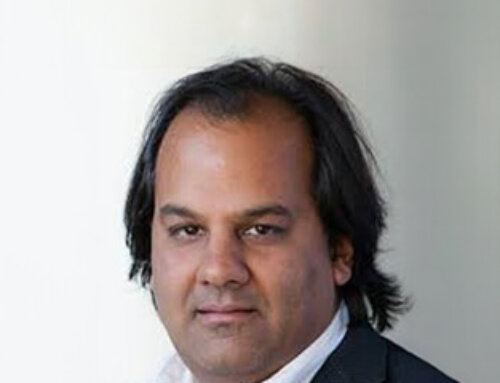By Kate Robards, Senior Writer
In the world of medicine, location matters. Just as urban and rural areas differ in lifestyle and health care access, the practice of sleep medicine is also uniquely shaped by its environment. In an interview with the Montage team, Evin Jerkins, DO, and Seema Khosla, MD, shared their views on practicing sleep medicine in rural areas, the hurdles they face, and their strategies for recruiting and retaining sleep technologists.
Practicing sleep medicine in rural areas
Dr. Jerkins, a sleep medicine specialist based in Ohio, shed light on the unique aspects of rural medicine. “You just have to be really creative and be very accommodating in a lot of ways,” he said. In rural settings, patients often travel great distances to access care, making punctuality a flexible concept.
Dr. Khosla, medical director at the North Dakota Center for Sleep, emphasized the importance of adaptability, citing instances where a patient’s late arrival doesn’t result in dismissal. “If somebody is an hour late because they’ve driven four hours, you’re not going to turn that person away.”
In a rural setting, it’s necessary to make concessions, they said, even if it means seeing patients over lunch or rearranging appointments to accommodate their travel schedules.
While resources may be more limited in rural areas, Dr. Jerkins praised the autonomy he enjoys. In contrast to large health care systems that are more common to urban areas, rural facilities provide more decision-making freedom, allowing physicians to tailor care to the individual needs of their patients.
Challenges in rural sleep medicine
The challenges faced by rural sleep medicine practitioners are multi-faceted. Dr. Jerkins highlighted the limitations of telemedicine in rural areas, where patients may struggle to find a reliable signal, resorting to creative solutions like driving to specific locations to attend virtual visits. “Broadband’s a huge problem in rural areas, but satellite technology might change that,” he said.
In rural medicine, patient schedules may revolve around their agricultural responsibilities, and health care professionals must work around these constraints.
“When [farmers] are running corn and beans until it’s dark, they will be busy doing that and you won’t see them until the spring after planting,” Dr. Jerkins said. But, if they call during their busy time, Dr. Khosla added, you pay attention.
Dr. Khosla emphasized the cultural nuances of rural areas, such as the seasonal demands of sugar beet harvesting in her area. In such cases, patients prioritize long work hours over their health, overlooking concerns like drowsy driving.
Even beyond barriers like access to care and technology, rural practitioners are tasked with educating patients on respecting their sleep. The challenge lies in helping patients understand the importance of sleep health amid their cultural obligations.
Recruiting and retaining sleep technologists
Recruiting and retaining sleep technologists has become a growing challenge in recent years, but it becomes more acute in rural areas. Dr. Jerkins highlighted his lab’s approach of training individuals from nonmedical backgrounds, such as environmental services or skilled trades. By showcasing the potential of a career in sleep medicine, his practice has managed to fill essential roles. This approach focuses on developing relationships within the community, which is a crucial aspect of rural medicine.
Dr. Khosla emphasized the significance of loyalty and a positive work environment in retaining sleep technologists. With the constant competition from larger institutions, rural practices must create an attractive workplace with a strong sense of community. “We’ve tried travel techs and bonuses, and I think what makes a difference is what I was taught when I moved to this area: It’s all about relationships and community,” she said.
In small practices with lean teams, additional considerations must be taken for emergency protocols when a single technologist is staffing a lab. “We’ve really had to think about our emergency protocols and how we call EMS when you can’t leave your patients. How do you go to the door to let EMS in? We’ve had to navigate that. It’s a consideration that never crosses your mind if you have two techs in a bigger lab,” Dr. Khosla said.
Additional factors, such as the ability to offer competitive pay or region-specific laws requiring specific degrees in polysomnography, can hinder tech recruitment as well.
Competing with large health care systems
How can rural sleep practices not only survive but thrive in an industry dominated by large health care systems?
Dr. Jerkins highlighted a core issue faced by rural patients: the reluctance to travel to cities for medical care. Patients in rural areas often prefer localized care, even if it means longer wait times compared with the efficiency of larger health care systems. Dr. Jerkins explained, “If you’re OK with waiting a little longer, but you still have this tailored high-quality care, they want that. And if we can, as a smaller place, do that well, you can probably always compete with a big system.”
Dr. Khosla expanded on this, emphasizing the personal touch and accessibility of smaller practices. She emphasized how patients recognize the difference between being treated as a person and being just a number in a large health care system.
Both physicians agreed that competition with large health care systems can be successful as long as the focus remains on providing quality, personalized care and making that care accessible to the local community. Dr. Jerkins even shared a unique approach his practice has taken, offering mask fittings to ensure patient comfort and adherence. While this may not be the most financially lucrative option, it demonstrates his lab’s commitment to patient well-being.
However, Dr. Khosla also raised a valid point about the financial aspect of rural sleep medicine. Billing for these additional services could improve the bottom line and help sustain the provision of personalized care. This balance between altruism and financial viability remains a constant challenge for rural practices.
The need for advocacy and legislative change
Dr. Khosla highlighted the importance of advocating for parity in reimbursement, especially in telemedicine. While there was a brief period of parity during the pandemic, it has since diminished. Parity is also vital when it comes to testing and in-lab polysomnography. Dr. Khosla argued that reimbursement for these services is often unequal, putting rural practices at a disadvantage.
The shortage of qualified sleep technologists was a pressing issue discussed by both physicians. Dr. Khosla, who had previously been hesitant about advocacy, acknowledged the importance of chipping away at this issue. She discussed the need to identify the root causes of the shortage and the ways in which health care institutions can support and compensate their technologists. In rural areas, technologists often act as the linchpin of care, educating patients and making the experience personal and valuable. An AASM presidential committee currently is examining the sleep technologist shortage and will propose recommendations to help rebuild the workforce.
There is a need for extension sites or remote access for larger health care centers to collaborate with rural practices, Dr. Jerkins noted. The idea is to reduce the burden on patients who might have to travel hours for a sleep evaluation.
Dr. Jerkins and Dr. Khosla both stressed the importance of a collaborative approach, in which rural practices, health care systems, and advocates work together to create lasting solutions. Dr. Khosla emphasized that taking action is essential, even if it feels daunting. “Our job is to deliver clinical care, but it’s also [to be] an advocate for our patients,” she explained.
The future of rural sleep medicine
Dr. Khosla expressed concerns about the financial sustainability of sleep medicine in rural areas. She stressed the need for exploring additional revenue-generating codes, apart from the commonly used evaluation and management codes, to keep sleep clinics operational.
Focusing on the technological advancements in sleep medicine, Dr. Jerkins highlighted the role of emerging technology. However, he cautioned against leaving behind those who are not tech savvy. “It’s inevitable that those technologies will play a big role in screening people. If we’re going to utilize that, we need to do it in a way that doesn’t disenfranchise or leave out those who are not used to that technology,” he said.
It’s important to empower local experts in rural areas, such as local lab technicians, who can be a source of information and support for patients, Dr. Khosla noted. “Historically,” she explained, “you used to have to go for a sleep consult to access a sleep lab, but we want to reduce these barriers in rural areas.”
She also proposed a community-centered approach to improve access to care for patients. She discussed a patient hub concept akin to community-based diabetes screenings in barbershops. “Meeting patients where they are,” she emphasized, “and making solutions personalized for their spaces could improve access.”
Both doctors agreed that primary care professionals, and even dentists, could play a pivotal role in providing access to sleep care. Dr. Jerkins suggested, “Primary care doctors are already there. Sleep medicine could be seamlessly integrated into their practices.”
Looking forward: A brighter tomorrow
The practice of sleep medicine in rural areas presents unique challenges and rewards. The adaptability, autonomy and close-knit relationships within the community can be an advantage to rural sleep medicine. However, health care professionals in these regions must overcome barriers related to access to care, technology and patient education. Recruiting and retaining sleep technologists remain ongoing challenges. As the landscape of health care continues to evolve, addressing these issues is essential to ensure quality sleep medicine care in rural America.
This article appeared in volume eight, issue four of Montage magazine.









